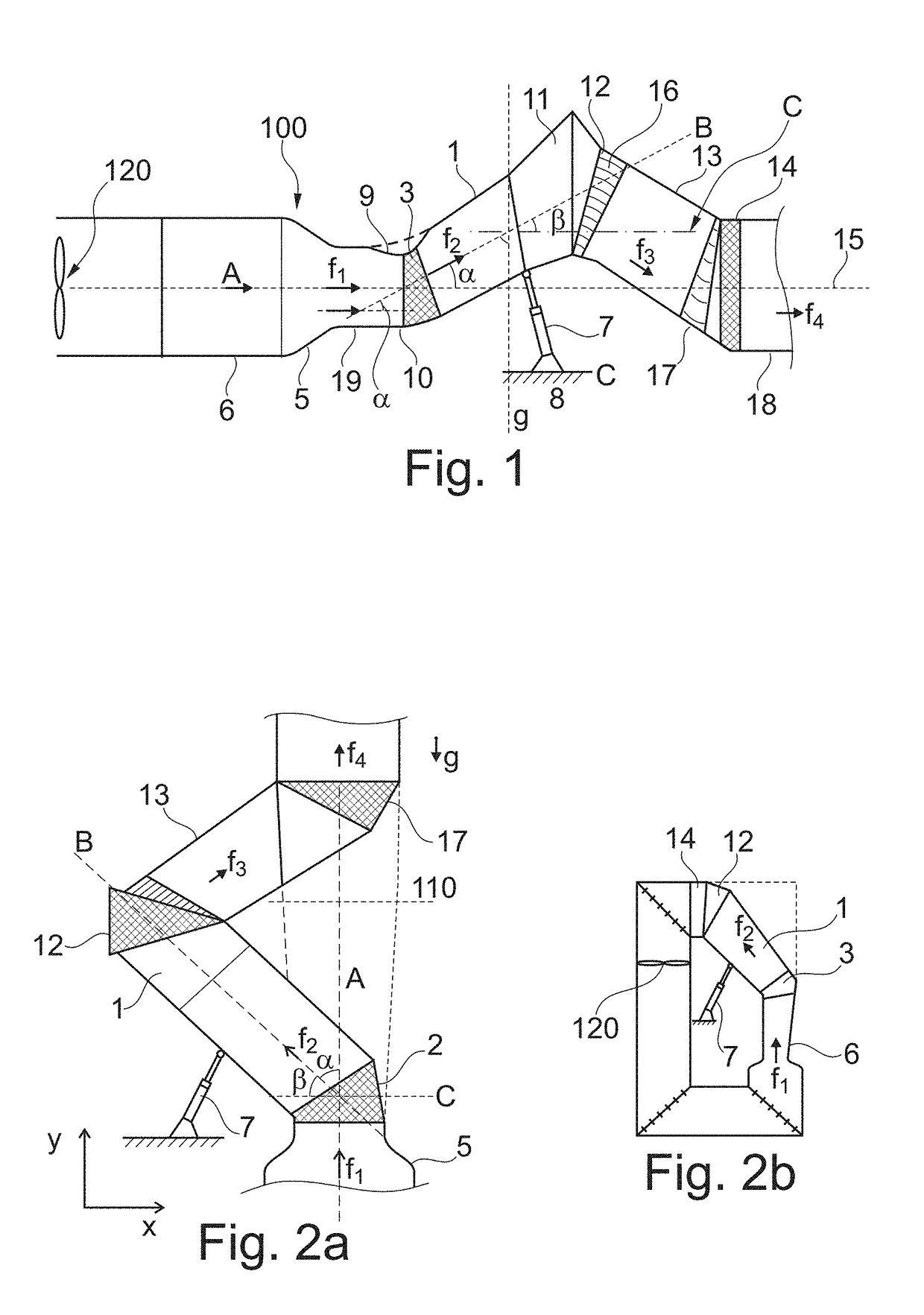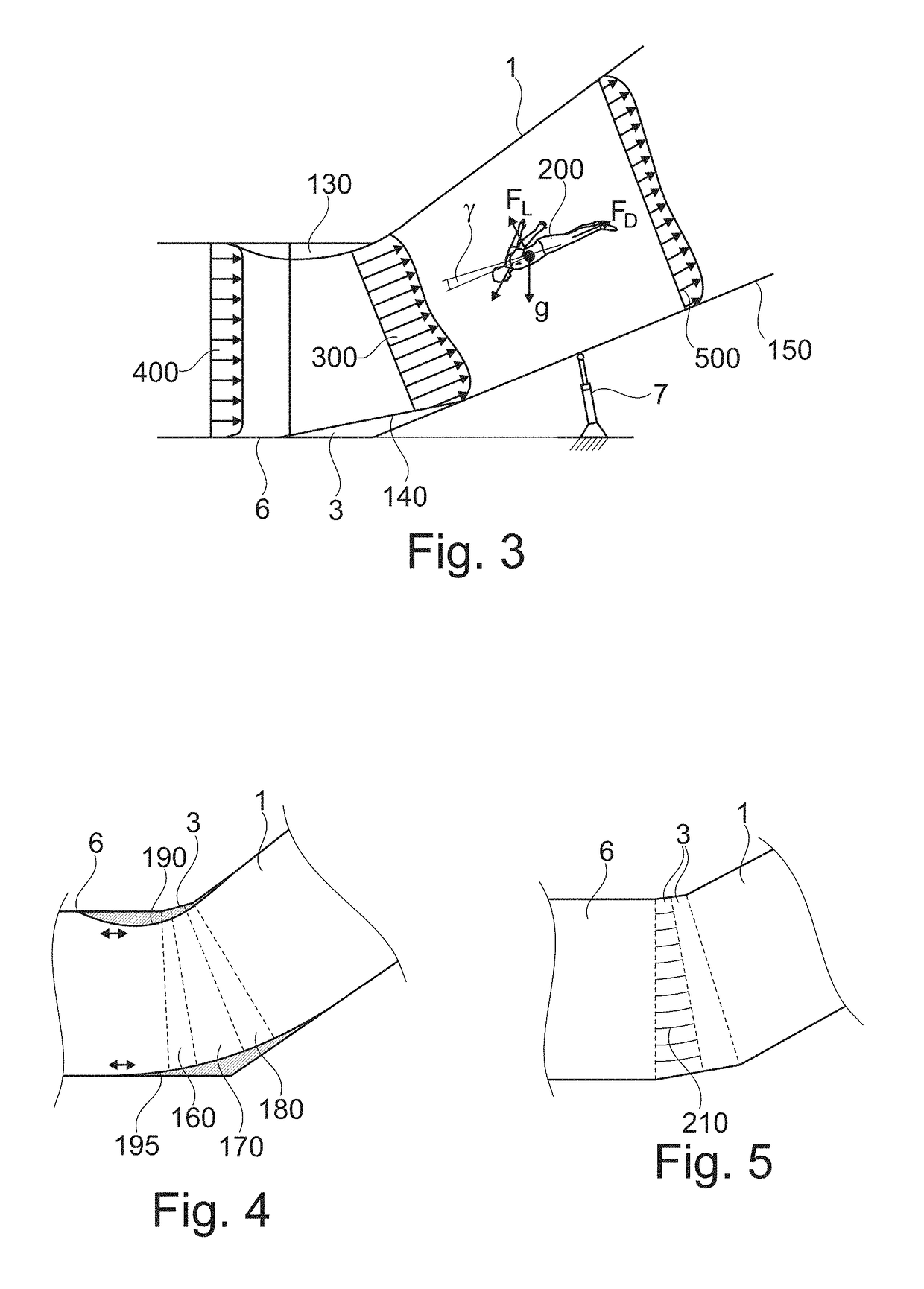Wind tunnel for human flight
a technology for wind tunnels and human flight, applied in emergency equipment, instruments, transportation and packaging, etc., can solve the problems of large and heavy, large horizontal wind tunnels, and hundreds of metric tons
- Summary
- Abstract
- Description
- Claims
- Application Information
AI Technical Summary
Benefits of technology
Problems solved by technology
Method used
Image
Examples
Embodiment Construction
[0054]The horizontal plane referred to herein is defined as a plane that is perpendicular to the direction of gravitational acceleration, and is denoted by C in FIG. 1.
[0055]The term “stable sustained human flight”, as used herein, refers to a flight for a human that can be performed for an unlimited time and be sustained in the air for as long as desired. The launch and landing may be performed in the same place or in different parts of the test section, and the landing may take place both upstream and downstream of the launch. Thanks to the combination of the inclined test section, the wind speed and the shape and properties of the flow field that serve to allow the human or flyer to remain airborne, the flight itself can be made to last for as long as desired and the flyer can move along the length and width of the test section and still experience suitable aerodynamic conditions for sustained flight. In contrast, some wind tunnels have a fixed launch area and landing area, each ...
PUM
 Login to View More
Login to View More Abstract
Description
Claims
Application Information
 Login to View More
Login to View More - Generate Ideas
- Intellectual Property
- Life Sciences
- Materials
- Tech Scout
- Unparalleled Data Quality
- Higher Quality Content
- 60% Fewer Hallucinations
Browse by: Latest US Patents, China's latest patents, Technical Efficacy Thesaurus, Application Domain, Technology Topic, Popular Technical Reports.
© 2025 PatSnap. All rights reserved.Legal|Privacy policy|Modern Slavery Act Transparency Statement|Sitemap|About US| Contact US: help@patsnap.com



